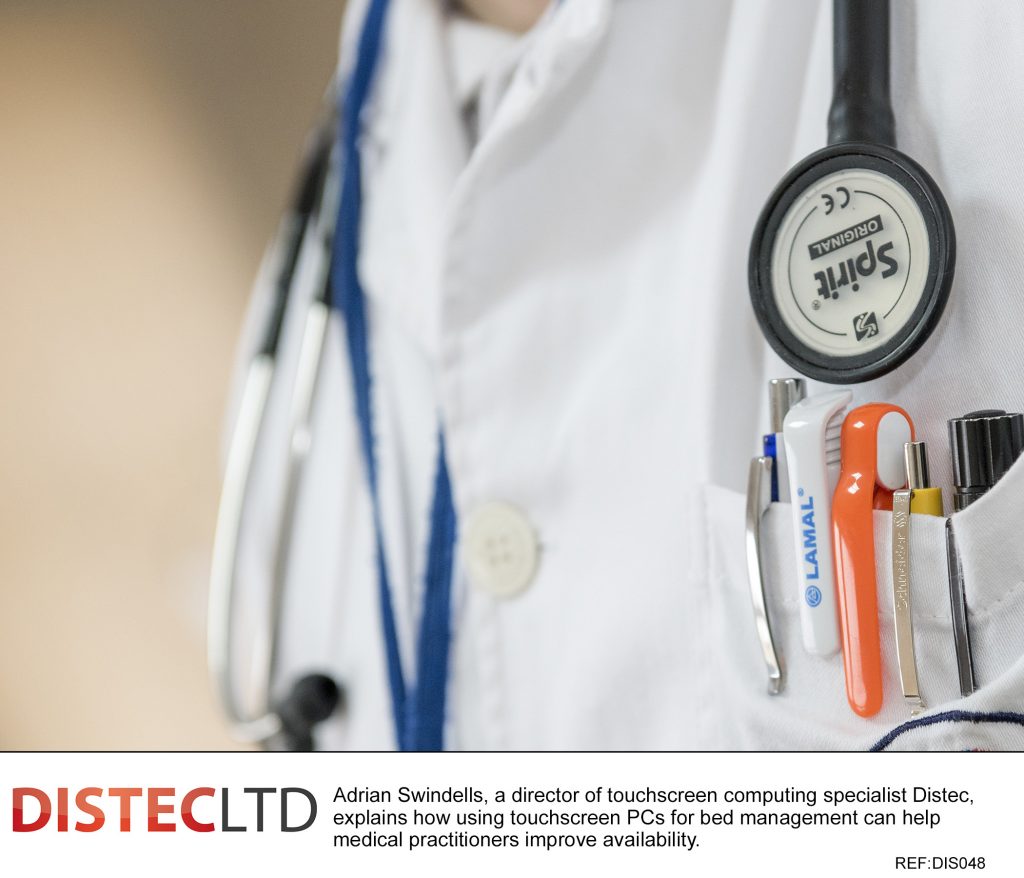How Touch Screen Technology can Reduce Hospital Bed Waiting Times
Anybody who has spent time in a GP’s waiting room understands how frustrating healthcare waiting times can be. These inconvenient waits are bad enough when nervously awaiting routine appointments, but are significantly more stressful when urgent care is required. Here, Adrian Swindells, a director of touchscreen computing specialist Distec, explains how using touchscreen PCs for bed management can help medical practitioners improve availability.
The state of the NHS is undoubtedly one of the UK’s most discussed topics in recent years. Whether on a political or social level, there are all manner of discussions and debates spurred from the challenges facing the organisation and what the future may hold for it.
One of the most prominent challenges is that of bed management and waiting times. According to bed availability figures from the NHS, on average 89 per cent of all available overnight beds were occupied in the first quarter of 2017. This accounts for approximately 116,643 beds across the UK and is above the 85 per cent considered to be the maximum occupancy rate.
The reason for specifying an upper limit for occupancy is to allow hospital staff time to not only clean beds but also to ensure that enough are free for patients that need them. Managing this process is becoming increasingly difficult, particularly in light of the hospital closures and ward downgrades that have either occurred recently or been announced for coming years.
There are a couple of reasons why this is happening. According to Matt Schuchardt, a director of HIMSS Analytics, “few hospitals know how their beds are used and where they’re in use.” In effect, many hospitals are not equipped with the tools to effectively manage patient flow in a growing population that overwhelms existing systems.
Schuchardt identifies a solution to this, which is to use newer software that can make managing bed-availability data easier. Yet while this is indefinitely a critical component, it is only a partial solution. To truly make headway in improving bed management, hospitals must adjust how this information is accessed.
For example, investment in bedside touchscreen PCs and ward digital signage not only allows doctors to access up-to-date patient records faster, it also gives them access to the hospital’s bed management system. This means that, in the case of an emergency admission, hospital staff can quickly and easily access the system and identify what beds are free and clean.
This provides a small step towards better healthcare. Without spending valuable time finding an available desktop PC and accessing the bed management system, doctors can spend more time treating and caring for patients. This will gradually ease the strain on bed availability by minimising the time each patient spends waiting for care.
As UK health secretary Jeremy Hunt stated in January 2016, “proper investment in IT can save time for doctors and nurses and means they can spend more time with patients.” By reconsidering the digital systems and how they are physically accessed, healthcare managers can alleviate the frustration of long waiting times for patients and practitioners alike.

